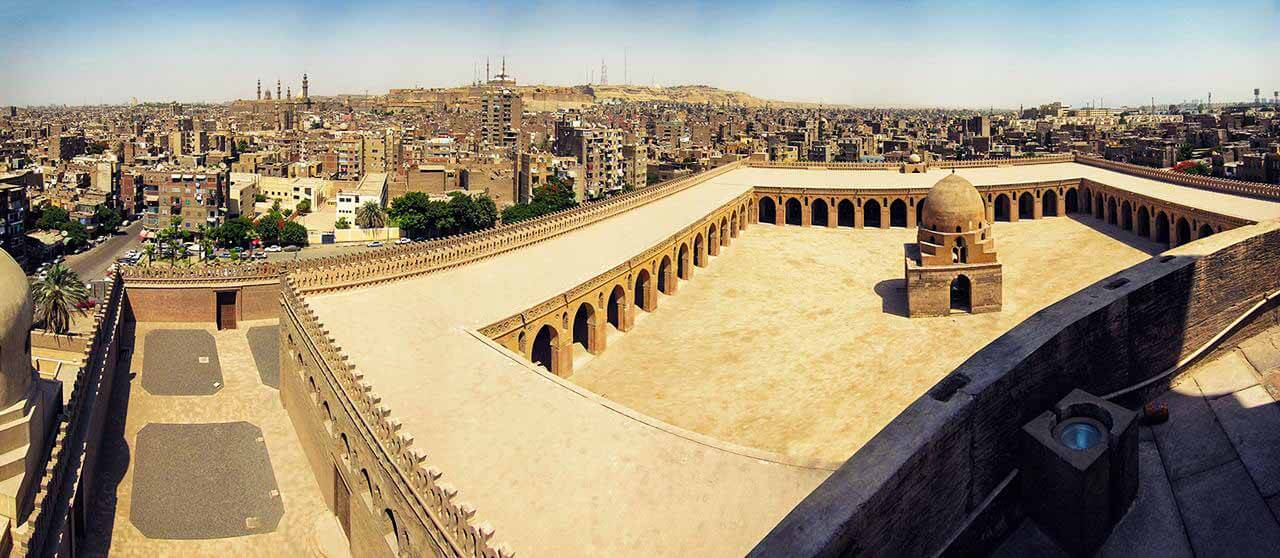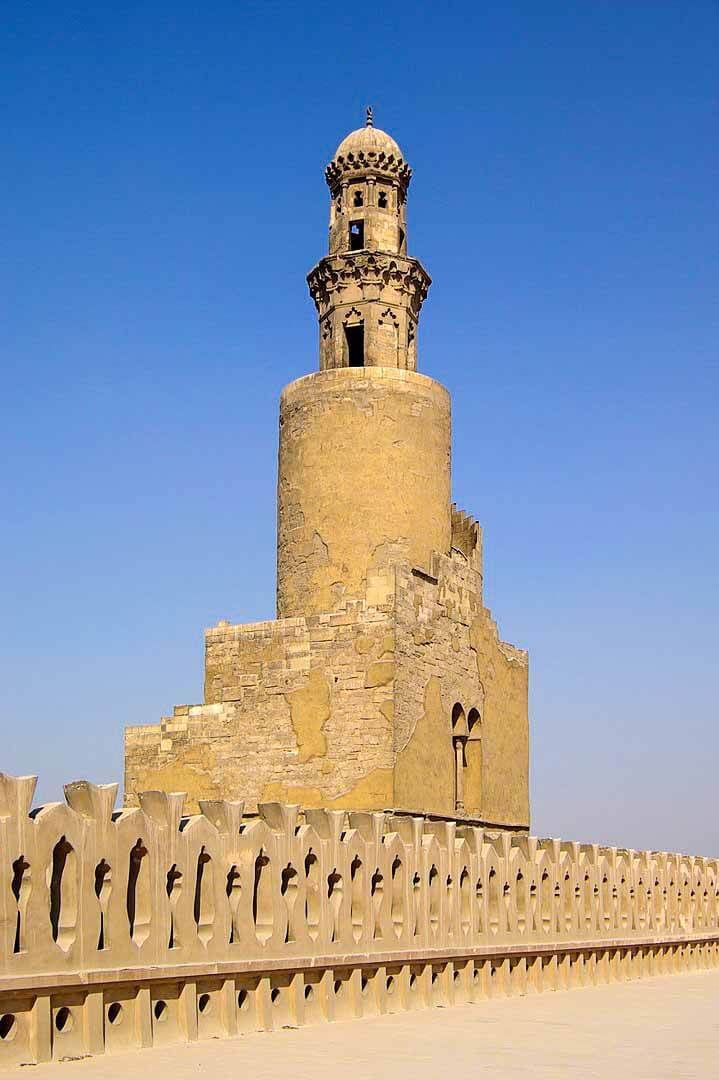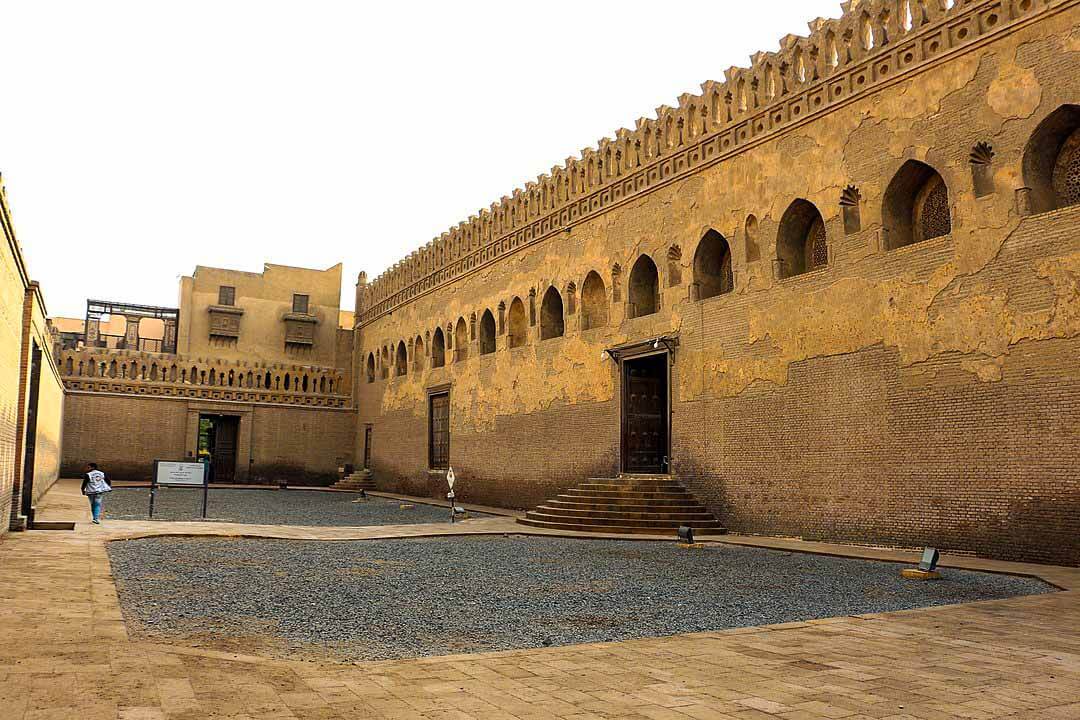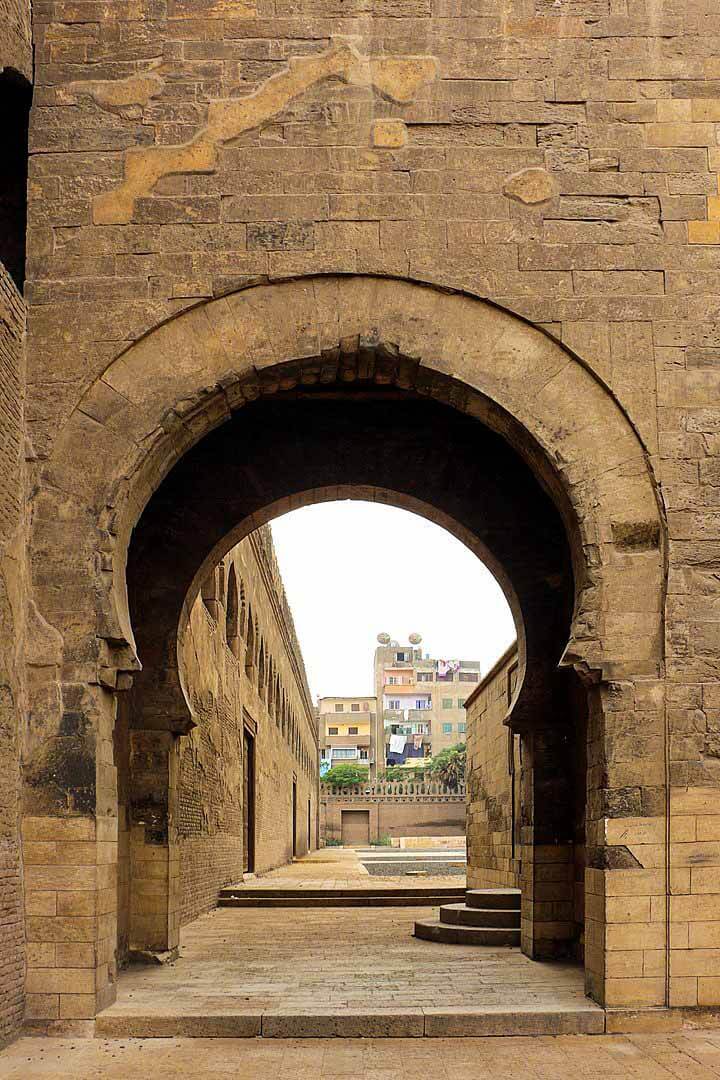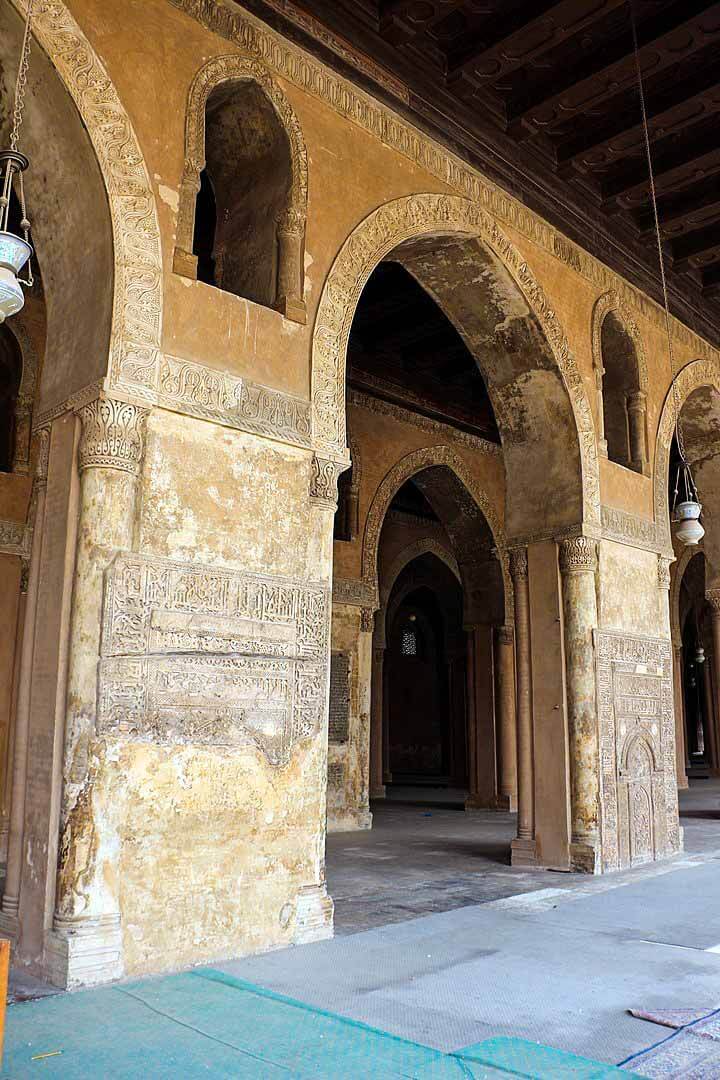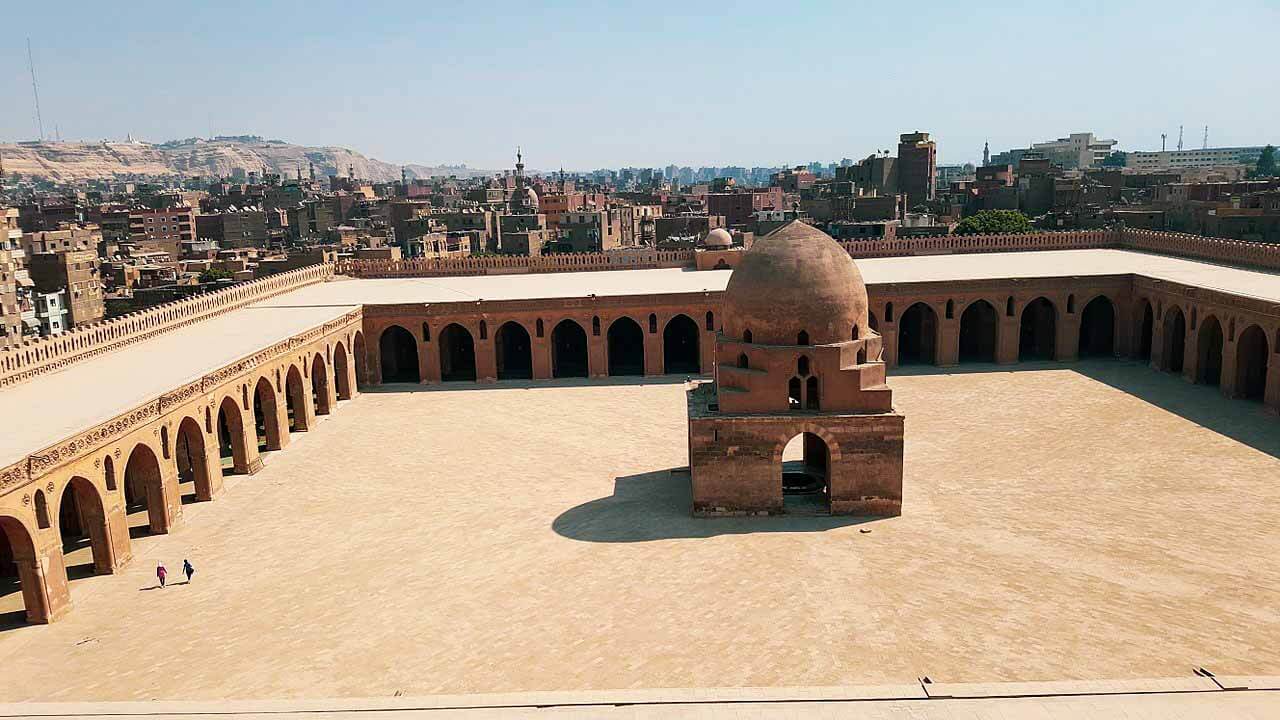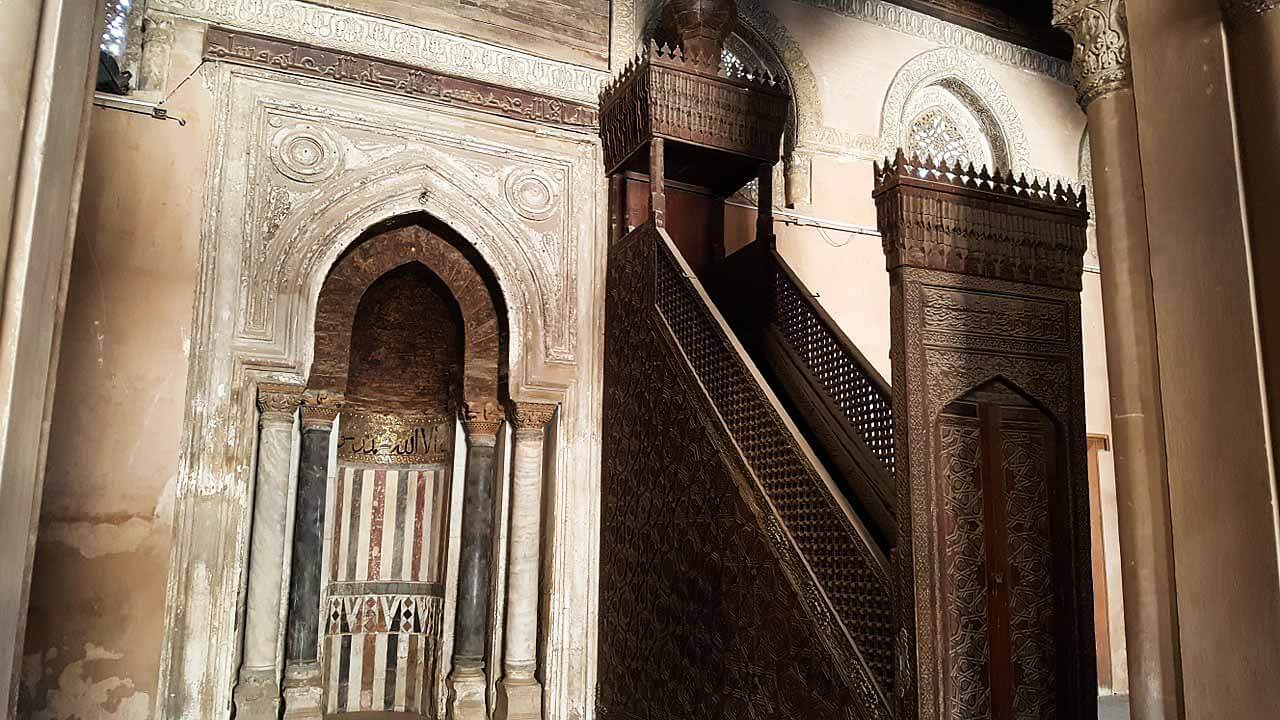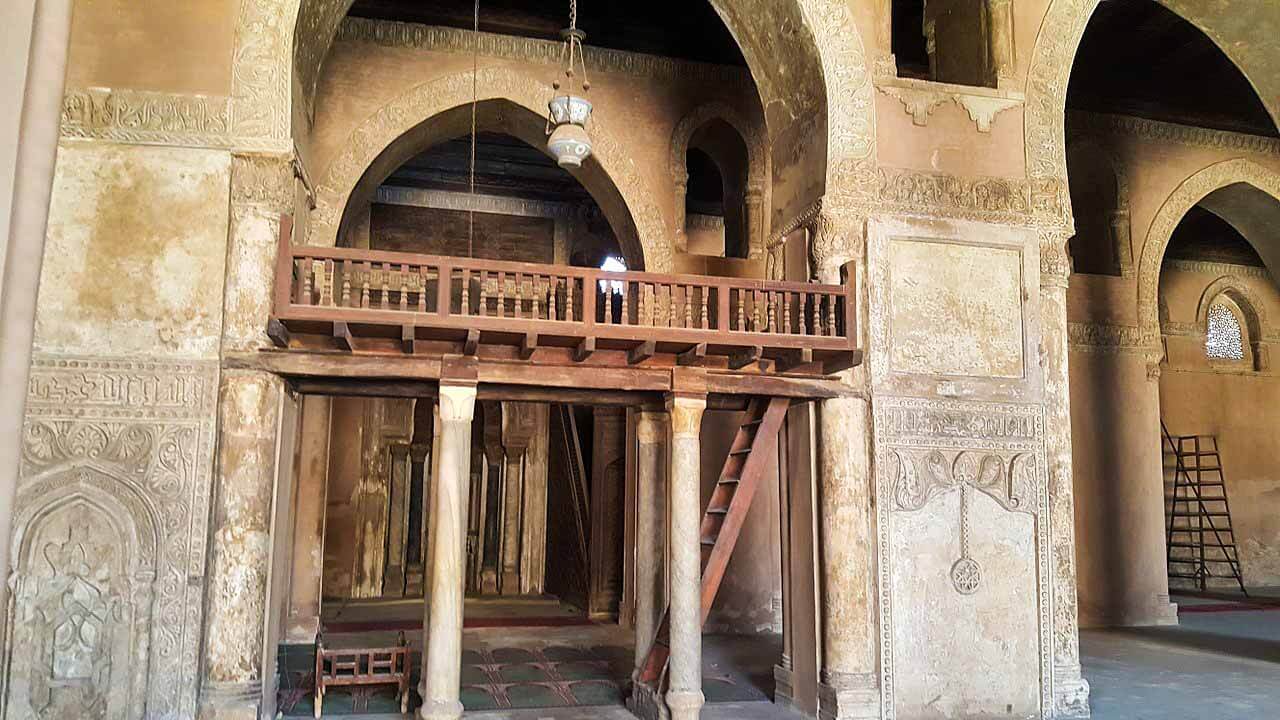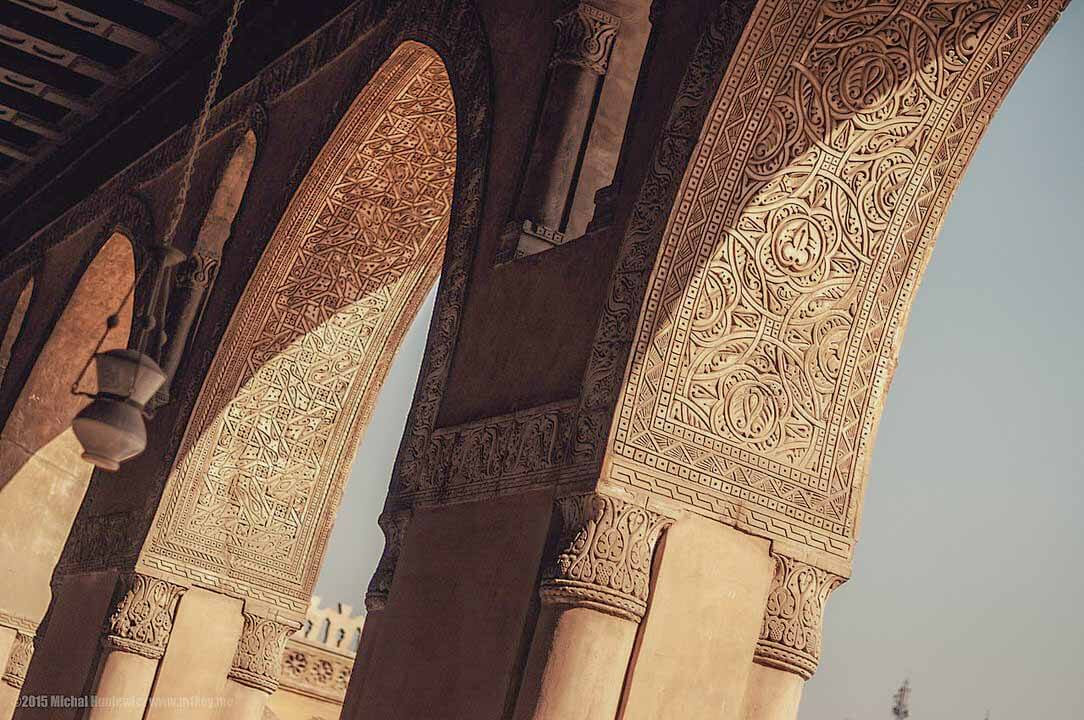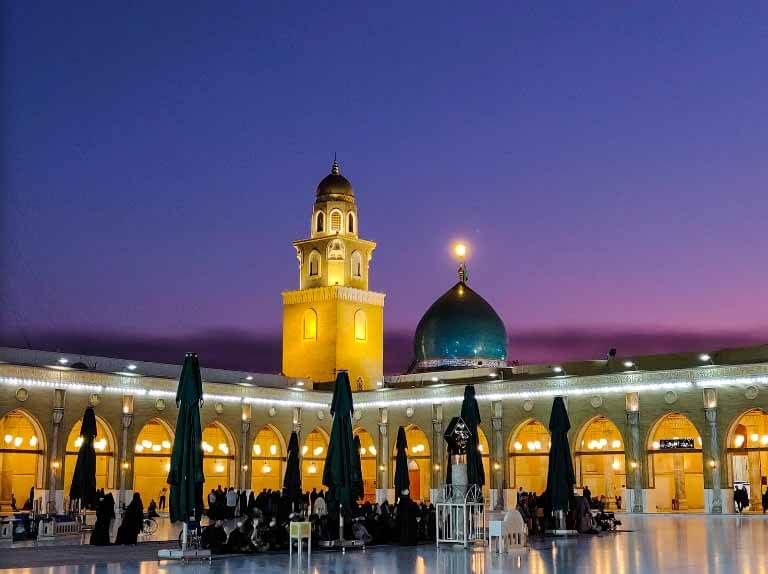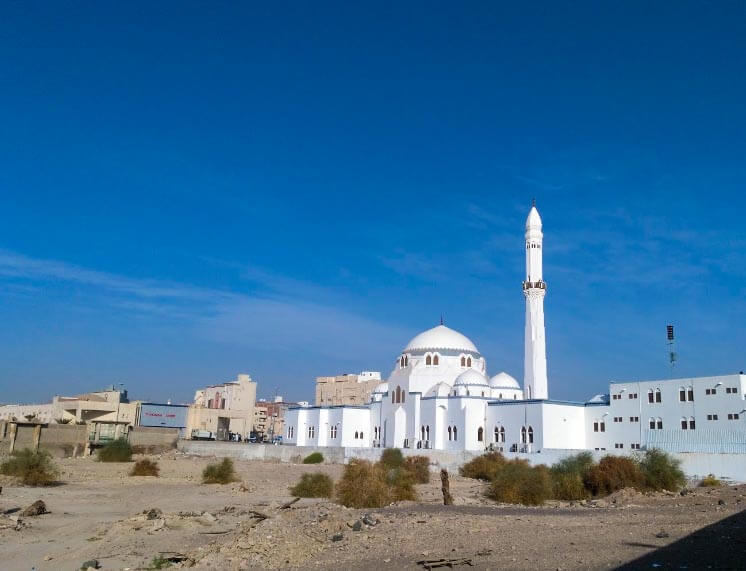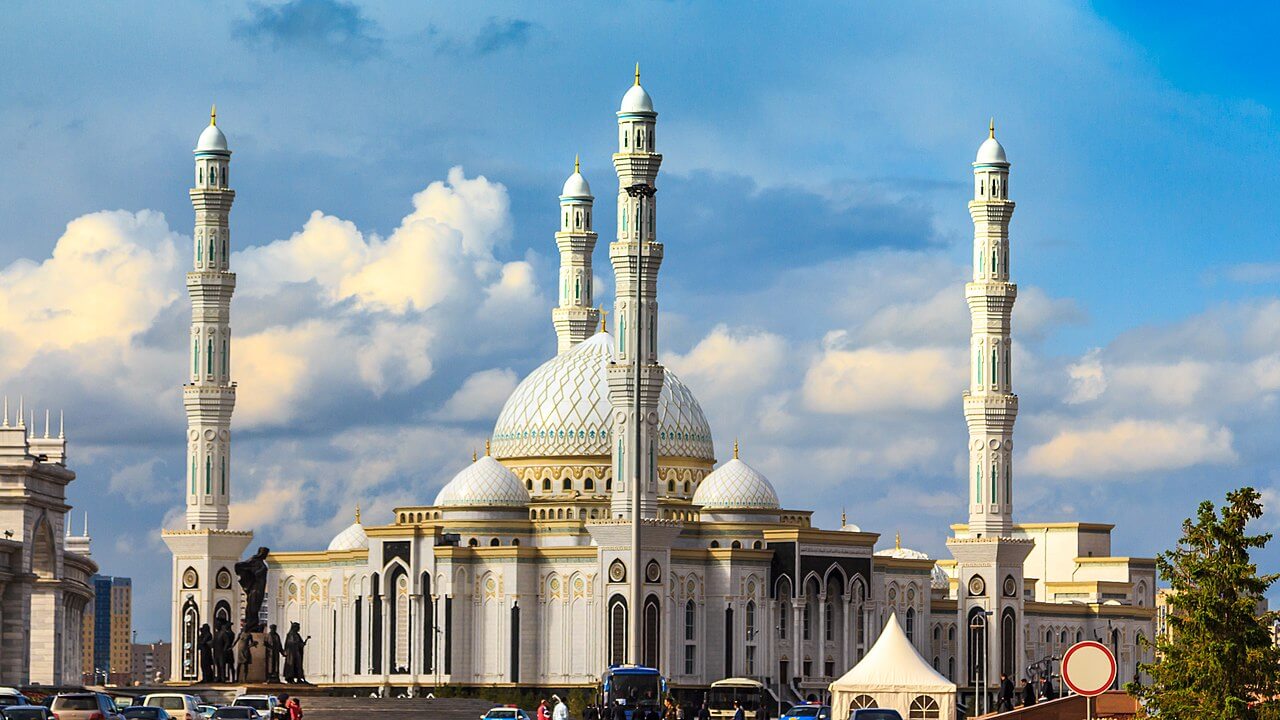Cairo, Egypt
Coordinates: 30.028750, 31.249528
The Mosque of Ibn Tulun is located in Cairo, Egypt. It is the oldest mosque in Egypt as well as the whole of Africa surviving in its full original form, and is the largest mosque in Cairo in terms of land area.
Since Ibn Tulun Mosque has much open space, it boasts both sunlight and shadows. It is built around an open square courtyard which allows natural light to travel through.
History
The mosque was commissioned under the rule of Ahmad ibn Tulun, the Abbasid governor of Egypt from 868–884 whose rule was characterized by de facto independence.
It was designed by the prominent Egyptian architect, Saiid Ibn Kateb Al-Farghany, who was a Christian Orthodox, the same engineer who designed the Nilometer.
The mosque was constructed on a small hill called Gebel Yashkur, “The Hill of Thanksgiving.”
One local legend says that it is here that Hz. Nuh’s عليه اسلام Ark came to rest after the Deluge, rather than at Mount Ararat.
The mosque has been used for several purposes. One such purpose is it was used as a shelter for pilgrims from North Africa to the Hijaz in the 12th century.
The grand congregational mosque was intended to be the focal point of Ibn Tulun’s capital, al-Qata’i, which served as the center of administration for the Tulunid dynasty.
The spiral minaret
The minaret shows influences from both the Lighthouse of Alexandria and the famous minaret in Samarra.
It is modeled after the minarets of Samarra, with a spiral staircase around the outside.
There is significant controversy over the date of construction of the minaret, which features a helical outer staircase.
It is also told that using these stairs one can climb up on a horse.
Legend has it that Ibn Tulun himself was accidentally responsible for the design of the structure: supposedly while sitting with his officials, he absentmindedly wound a piece of parchment around his finger.
When someone asked him what he was doing, he responded, embarrassed, that he was designing his minaret.
Features in movies
Parts of the James Bond film The Spy Who Loved Me were filmed at the mosque. It is also featured in a level of Tomb Raider: The Last Revelation, where Lara Croft has to trap a minotaur inside the mosque.
Know This
The mosque is an active place of worship. At the time of visiting the mosque women need to cover their heads; arms and legs and all visitors will need to leave their shoes or have shoe covers put over shoes prior to entering the mosque.
The mosque is a bit apart from the proper Cairo old town as well as from the Christian Quarter and the Mosque of ‘Amr Ibn al-‘As. It is between them. Therefore, it is not so reknown or frequented, but it’s worth a visit. I’ve been there twice.
You can climb the top of the Minaret at the Mosque of Ibn Tulun. Stunning views from the top of Cairo. Minarets serve multiple purposes. While they provide a visual focal point, they are generally used for the Muslim call to prayer.



